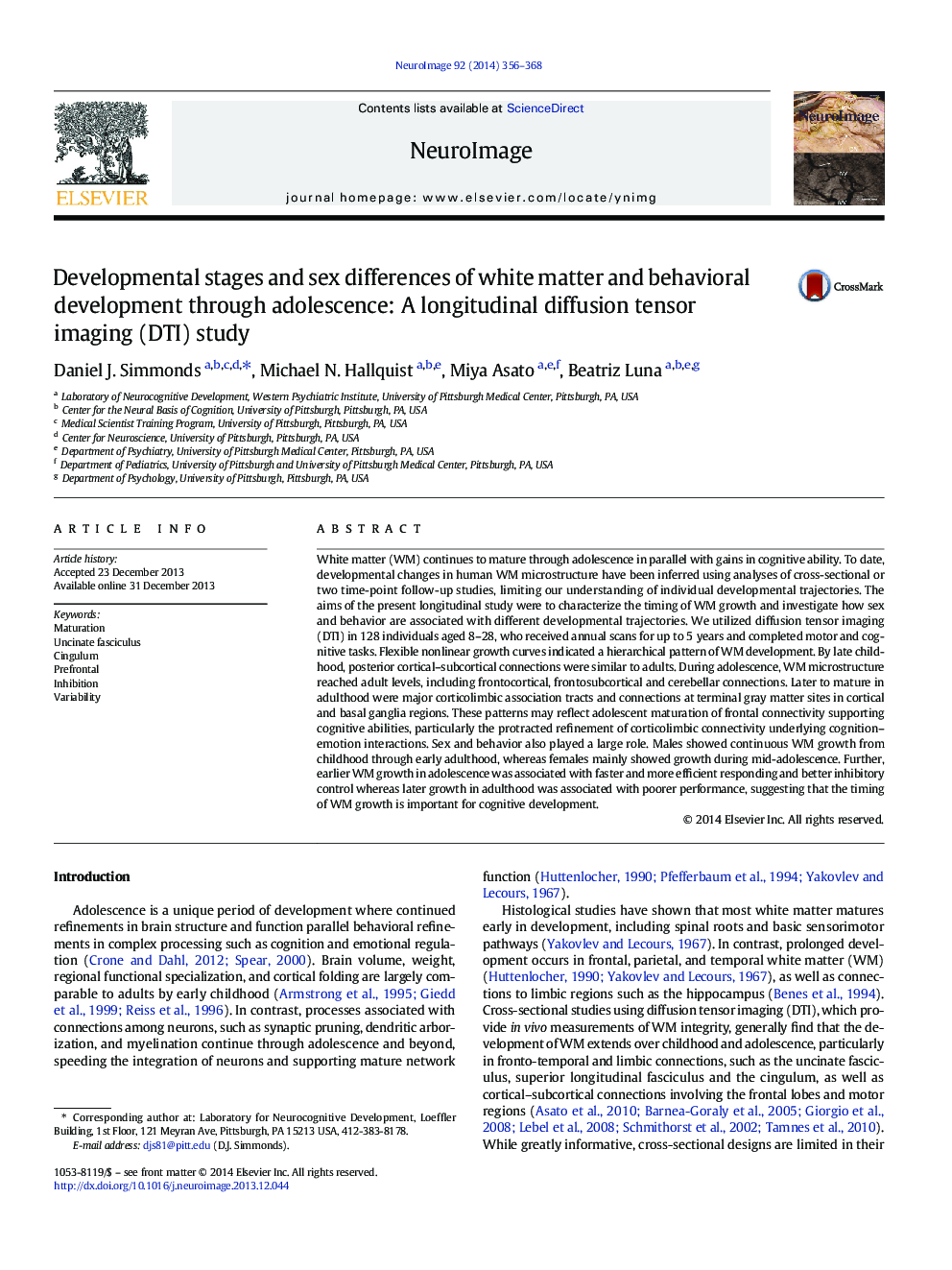| کد مقاله | کد نشریه | سال انتشار | مقاله انگلیسی | نسخه تمام متن |
|---|---|---|---|---|
| 6027616 | 1580913 | 2014 | 13 صفحه PDF | دانلود رایگان |
عنوان انگلیسی مقاله ISI
Developmental stages and sex differences of white matter and behavioral development through adolescence: A longitudinal diffusion tensor imaging (DTI) study
دانلود مقاله + سفارش ترجمه
دانلود مقاله ISI انگلیسی
رایگان برای ایرانیان
کلمات کلیدی
موضوعات مرتبط
علوم زیستی و بیوفناوری
علم عصب شناسی
علوم اعصاب شناختی
پیش نمایش صفحه اول مقاله

چکیده انگلیسی
White matter (WM) continues to mature through adolescence in parallel with gains in cognitive ability. To date, developmental changes in human WM microstructure have been inferred using analyses of cross-sectional or two time-point follow-up studies, limiting our understanding of individual developmental trajectories. The aims of the present longitudinal study were to characterize the timing of WM growth and investigate how sex and behavior are associated with different developmental trajectories. We utilized diffusion tensor imaging (DTI) in 128 individuals aged 8-28, who received annual scans for up to 5Â years and completed motor and cognitive tasks. Flexible nonlinear growth curves indicated a hierarchical pattern of WM development. By late childhood, posterior cortical-subcortical connections were similar to adults. During adolescence, WM microstructure reached adult levels, including frontocortical, frontosubcortical and cerebellar connections. Later to mature in adulthood were major corticolimbic association tracts and connections at terminal gray matter sites in cortical and basal ganglia regions. These patterns may reflect adolescent maturation of frontal connectivity supporting cognitive abilities, particularly the protracted refinement of corticolimbic connectivity underlying cognition-emotion interactions. Sex and behavior also played a large role. Males showed continuous WM growth from childhood through early adulthood, whereas females mainly showed growth during mid-adolescence. Further, earlier WM growth in adolescence was associated with faster and more efficient responding and better inhibitory control whereas later growth in adulthood was associated with poorer performance, suggesting that the timing of WM growth is important for cognitive development.
ناشر
Database: Elsevier - ScienceDirect (ساینس دایرکت)
Journal: NeuroImage - Volume 92, 15 May 2014, Pages 356-368
Journal: NeuroImage - Volume 92, 15 May 2014, Pages 356-368
نویسندگان
Daniel J. Simmonds, Michael N. Hallquist, Miya Asato, Beatriz Luna,